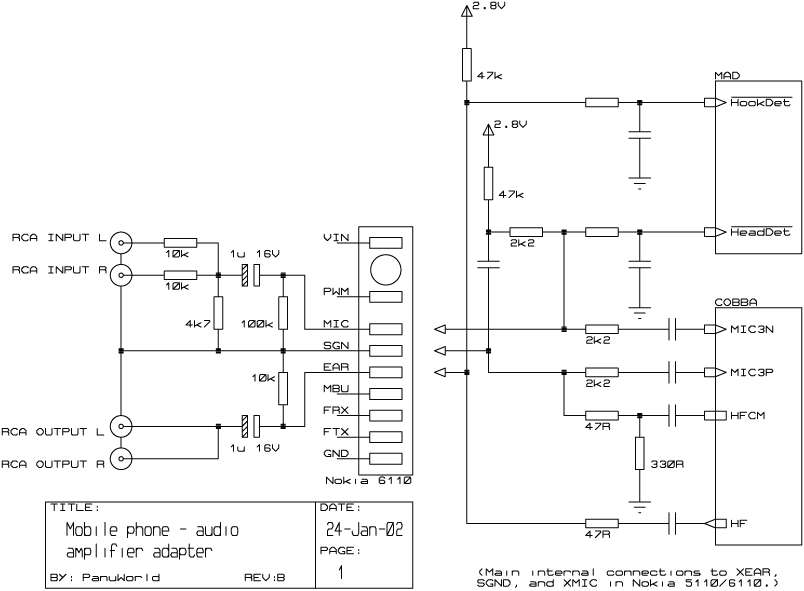Khuếch đại âm tần cho dtdđ
The rightpartof Figure 1 is simplified schematic diagram of the phone externalaudioinputs. Only the audio lines used by the Car profile has beendrawn.You can see that COBBA ASIC has a differential audio input MIC3for thecar kit HFU-2. COBBA uses the same single-ended output (HF/HFCM)forboth headset and car kit.
Signaling is simple. By default,theXEAR pin of the phone is internally pulled up with 47kilo-ohmresistor. The car kit pulls the pin down with a 10 kilo-ohmresistorthat causes the HookDet of the processor ASIC "MAD" go down.Change atHookDet generates an interrupt in MAD and the phone switchesto Carprofile. (A headset pulls down the XMIC pin with the microphoneitselfand this causes MAD HeadDet input go low.)
The car kitmustactivate the car profile by pulling the XEAR down with a DC load.TheXEAR carries also the output audio as an AC signal. At input pinXMIC,I have seen that the DC bias must be set so that the AC signalisproperly transmitted into COBBA. On the other hand, too low DC levelatXMIC causes HeadDet pin on MAD to go down and phone to activatetheHeadset profile.
